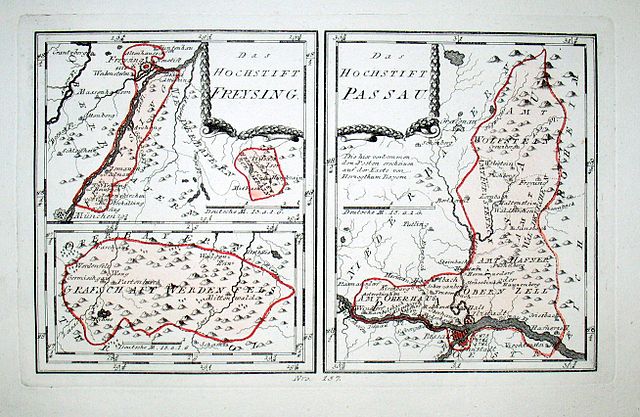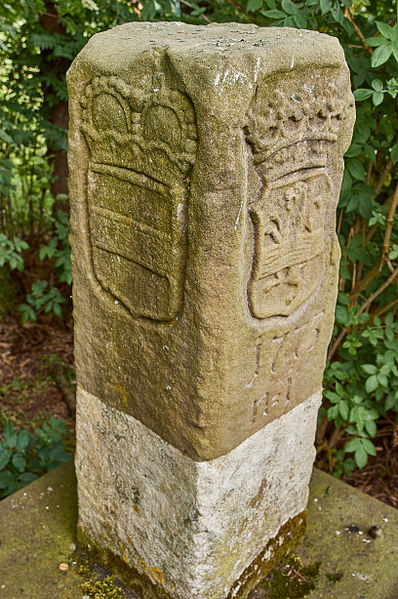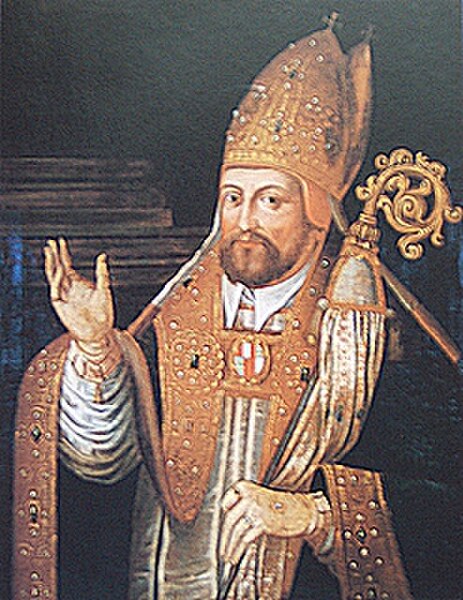In the Holy Roman Empire, the German term Hochstift referred to the territory ruled by a bishop as a prince, as opposed to his diocese, generally much larger and over which he exercised only spiritual authority. The terms prince-bishopric and ecclesiastical principality are synonymous with Hochstift. Erzstift and Kurerzstift referred respectively to the territory (prince-archbishopric) ruled by a prince-archbishop and an elector-archbishop while Stift referred to the territory ruled by an imperial abbot or abbess, or a princely abbot or abbess. Stift was also often used to refer to any type of ecclesiastical principality.
Hochstifte and dioceses in the late 18th century
Two prince-bishoprics (Hochstifte) in the late 18th century
Stone marker from 1766 demarcating the territories of the Prince-Bishopric of Münster (coat of arms on the left side) and the Dutch province of Overijssel
A prince-bishop is a bishop who is also the civil ruler of some secular principality and sovereignty, as opposed to Prince of the Church itself, a title associated with cardinals. Since 1951, the sole extant prince-bishop has been the Bishop of Urgell, Catalonia, who has remained ex officio one of two co-princes of Andorra, along with the French president.
Johann Otto von Gemmingen, Prince-Bishop of Augsburg (1591–1598)
Ecclesiastical lands in the Holy Roman Empire, 1780




